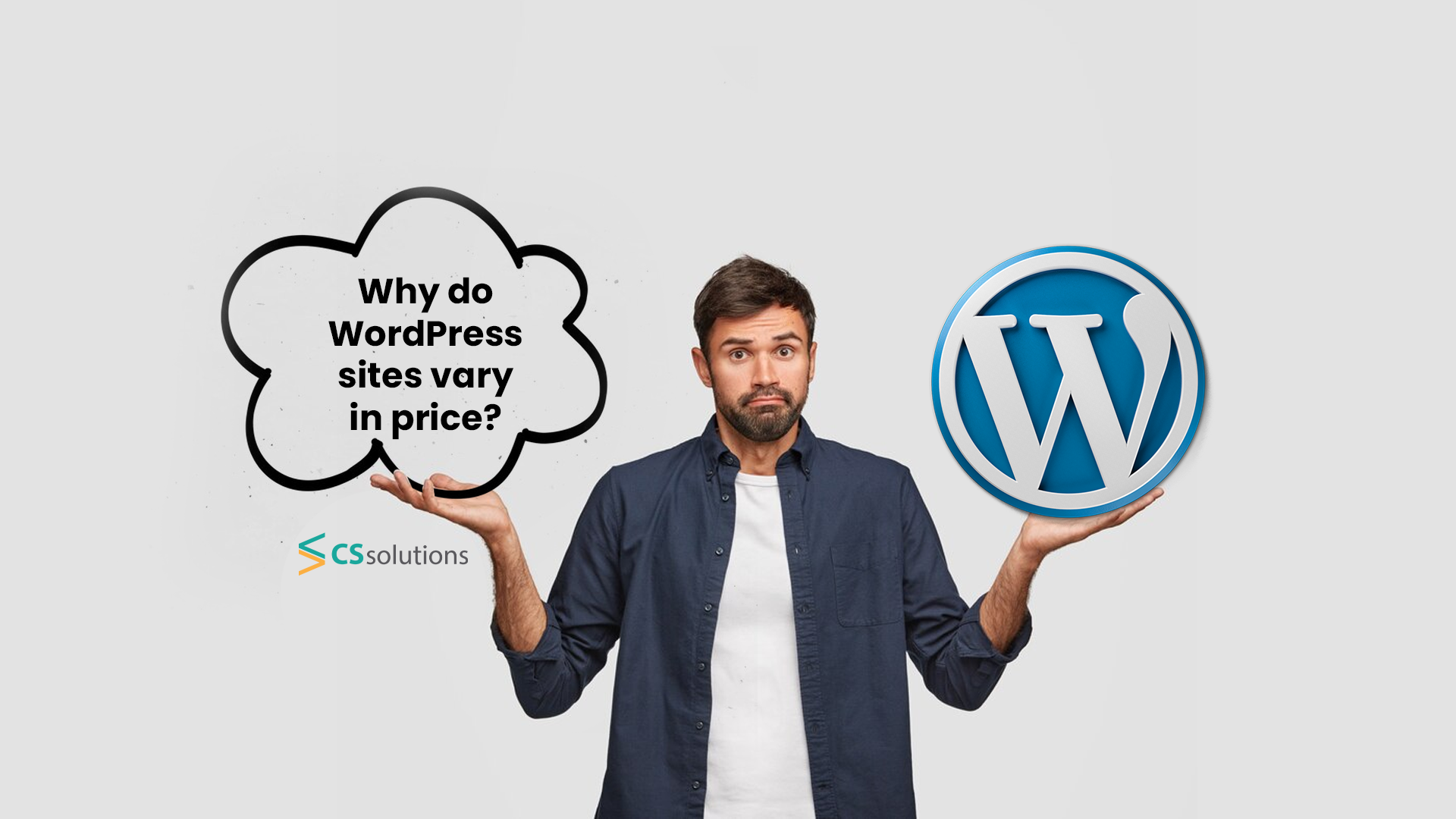In today’s digital world, having a strong online presence is crucial for organisations and individuals. Among the many systems accessible, WordPress is one of the most popular for website construction. However, if you’ve ever considered constructing a WordPress site, you’ve likely noticed a huge range of prices. The price of a WordPress site can vary greatly, ranging from low-cost choices to premium solutions. But why is this?
Let’s look at the aspects influencing the pricing variance in WordPress site development.
1) Unique Design for Each Page vs. One Design for All Pages
One of the key elements influencing the variety in WordPress site prices is the design approach. Some developers prefer a one-size-fits-all template, in which the same design is used on all website pages. This method is more cost-effective and time-efficient because it requires less customization.
A customised design for each page, on the other hand, enhances the site’s distinctiveness and customization. Each page is meticulously designed to satisfy specific requirements, generating a more visually appealing and engaging user experience. However, this level of personalization necessitates additional time and experience, increasing the overall cost of the project.
2) Custom Development vs. Template
Another significant consideration is whether the site is built from scratch with customised coding or whether it uses pre-made templates. Custom development provides exceptional flexibility, allowing for customised solutions to address specific needs. However, it requires a higher level of ability and competence from the developer, which raises the cost.
Alternatively, using templates can be a cost-effective solution, especially for small businesses or individuals with limited budgets. Templates provide a ready-made framework that can be easily customised to suit the needs of the site. While they may not offer the same level of flexibility as custom development, templates can still yield professional-looking results at a fraction of the cost.
3) SEO-Friendly vs. No SEO at All
Search engine optimization (SEO) is essential for determining a website’s visibility and ranking in search engine results. A well-optimized site is more likely to attract organic traffic and reach a wider audience. Consequently, integrating SEO best practices into the development process can significantly impact the overall cost of a WordPress site.
Developers who prioritize SEO-friendly design and development practices may invest additional time and resources into keyword research, on-page optimization, and site structure. These efforts contribute to better search engine visibility and long-term success for the website. Conversely, neglecting SEO altogether can result in poor visibility and limited reach, ultimately affecting the site’s effectiveness and ROI.
4) More Device-Friendly/Responsive vs. Basic Coverage
In today’s mobile-centric world, having a responsive website that adapts seamlessly to various devices and screen sizes is non-negotiable. A responsive design ensures that the site looks and functions optimally across desktops, laptops, tablets, and smartphones, providing users with a consistent experience regardless of the device they’re using.
Developing a responsive WordPress site requires careful planning and implementation to accommodate a diverse range of screen sizes and resolutions. This level of attention to detail comes at a cost, as it involves additional coding and testing to ensure compatibility across different devices. Conversely, opting for a basic design that only caters to a limited number of screen sizes may result in a subpar user experience on certain devices, potentially driving away valuable traffic and leads.
5) Having the Latest Plugins for Security, Optimization, Speed, etc. vs. Basic Plugins
Plugins play a crucial role in extending the functionality of a WordPress site, enabling features such as security enhancements, performance optimization, and e-commerce capabilities. However, not all plugins are created equal, and the choice of plugins can significantly impact the overall performance and security of the site.
Investing in premium plugins that offer advanced features and regular updates can enhance the site’s security, speed, and overall functionality. These plugins often come with dedicated support and maintenance, ensuring that the site remains secure and up-to-date with the latest technologies and best practices. Conversely, relying on free or basic plugins may save costs in the short term but could expose the site to security vulnerabilities and performance issues in the long run.
6) Quality of Development Services
The expertise and reputation of the WordPress development agency or freelancer also contribute to the pricing disparity. Experienced professionals with a track record of delivering high-quality solutions typically charge higher rates, reflecting their expertise and commitment to client satisfaction.
7) Maintenance and support
Building a WordPress e-commerce Website is just the beginning; ongoing maintenance and support are essential for its smooth operation. The cost of post-development services, including software updates, security patches, and technical support, should be factored into the overall pricing consideration.
In conclusion, we can say that the pricing difference between WordPress sites is due to the level of customisation, optimization, and sophistication built into them. For businesses entering the world of e-commerce, such as those using WooCommerce, investing in a precisely constructed WordPress site is a strategic investment in their online success.
At CS Web Solution, we specialize in WordPress development that is customized to your specific requirements, ensuring that your digital presence stands out from the crowd and connects the audience. By understanding the factors that contribute to pricing businesses and individuals can make informed decisions that align with their goals and objectives for their online presence.

